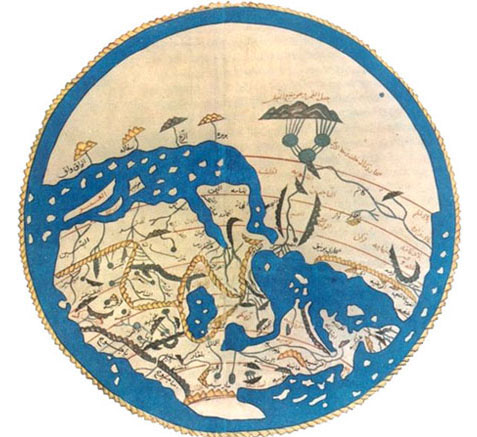Article of the Month - September 2020
“Reanimating the Power of Holy Protectors: Merchants and their Saints in the Visual Culture of Medieval and Early Modern Venice”
(Karen Rose Mathews:
Associate Professor of Art History, University of Miami)
Article Abstract:
This article takes a longue durée approach to the cult of saints in Venice, studying the social, political, and cultural manifestations of the city’s reliance on holy protectors over the course of seven centuries. Analysis of the veneration of saints in Venice generally has separated the study of medieval cults from their early modern counterparts. “Reanimating the Power of Holy Protectors,” however, explores the continuum of important saints’ cults in Venice, tracing the ways in which holy figures were reanimated at key moments of Venetian history to protect the city, stake territorial claims, and challenge bitter commercial rivals. Saints like Mark and George had a longstanding presence in the city, but their significance as civic and specifically mercantile protectors was not continuous. The memory of their cults was conveniently lost or their relics hidden so that the saints and their miraculous powers could be fortuitously rediscovered precisely when Venice needed their support the most. The appearances and reappearances of the saint and miracles performed in the service of the Venetians were duly recorded in visual representations in a variety of media—sculpture, mosaic, enamel, and painting—in religious and secular structures across the city. In the cyclical reappearance of these Venetian patrons, Mathews notes the different constituencies that claimed the saint as protector, reflecting the extraordinary changes in Venice’s social, political, and religious life over seven hundred years. The veneration of Mark, Isidore, and George was initially the sole province of the doge and the city’s aristocratic families who controlled politics and monopolized Mediterranean trade. Over the centuries, the definition of a Venetian merchant changed and non-noble citizens and even foreigners could enjoy the patronage of these holy figures and celebrate them in ambitious artistic commissions. Above all, Venice’s saints symbolized the city’s mercantile outlook and presence in the Mediterranean, protecting the Venetians as they engaged in commercial endeavors and military campaigns across the sea.
Nomination Statement:
Building on her long-standing interest in spolia, Karen Mathews examines Venice's veneration of three saints--its patron, Saint Mark; Saint Isidore, and Saint George--as a history of sporadic reappropriations of their cults as strategic responses (reflected in artistic production across different media from mosaics to oil painting ) to changing conditions within Venice and, especially, across the Mediterranean between the eleventh and sixteenth centuries.
Author’s Comment:
In this article, I had the chance to combine three research threads that I have pursued over the years: the Venetian cult of saints, the reuse and reinterpretation of cultural products, and the Venetians relationship with the Mamluks. What intrigued me was the way in which practices and mentalities established in the early Middle Ages were perpetuated for centuries, especially when Venice faced economic and political challenges. In acquiring holy relics to enhance the prestige of the city, Venetian merchants stole saints’ bodies from religious institutions all across the Mediterranean. This form of forceful appropriation mirrored their acquisition of other culturally and politically charged objects—reliquaries, beautiful marbles, and artworks from allies and enemies alike. What also connected these objects and relics was their repurposing and reinterpretation in Venetian contexts, channeling their power to serve new constituencies and functions. The artworks discussed here present notable examples of the Venetians visualizing Mediterranean Muslims as the balance of power shifted dramatically in the fifteenth and sixteenth centuries. Venice’s perceived mastery of the seas was challenged by the rise of the Ottomans and in their artistic production the Venetians identified the Mamluks as allies and trusted trading partners while the Ottomans were portrayed as enemies who need to be neutralized due to the threat they posed to Venice’s lucrative mercantile ventures and maritime livelihood. Though scholars like David Perry have addressed the medieval cult of saints in Venice and Patricia Fortini Brown and Elizabeth Rodini have analyzed Venetian Renaissance painting, in this article I wanted to integrate two art historical time periods to demonstrate the continued efficacy of the city’s holy protectors and the perpetuation of a set of medieval practices that served Venetian interests in the Mediterranean.
Would you like to discuss this article?
Start a thread on the Mediterranean Seminar list-server
See the other Articles of the Month here.
